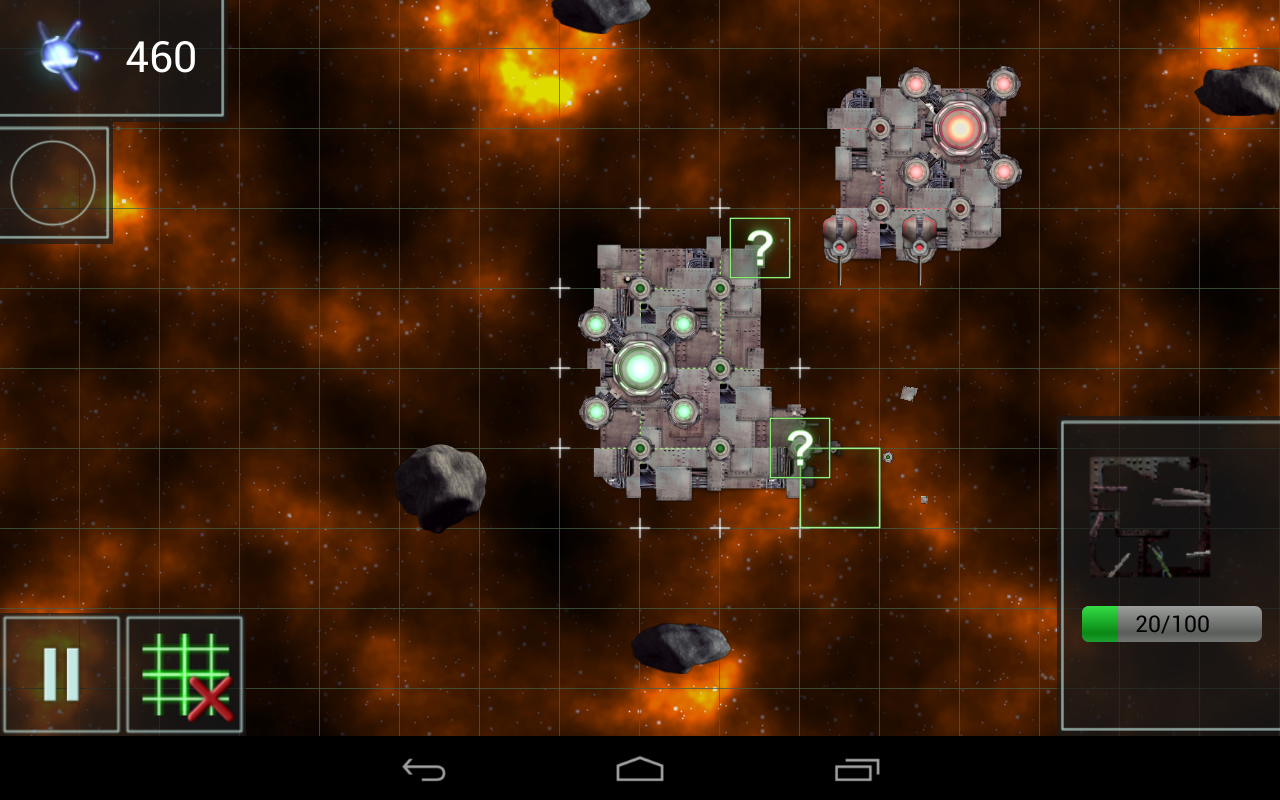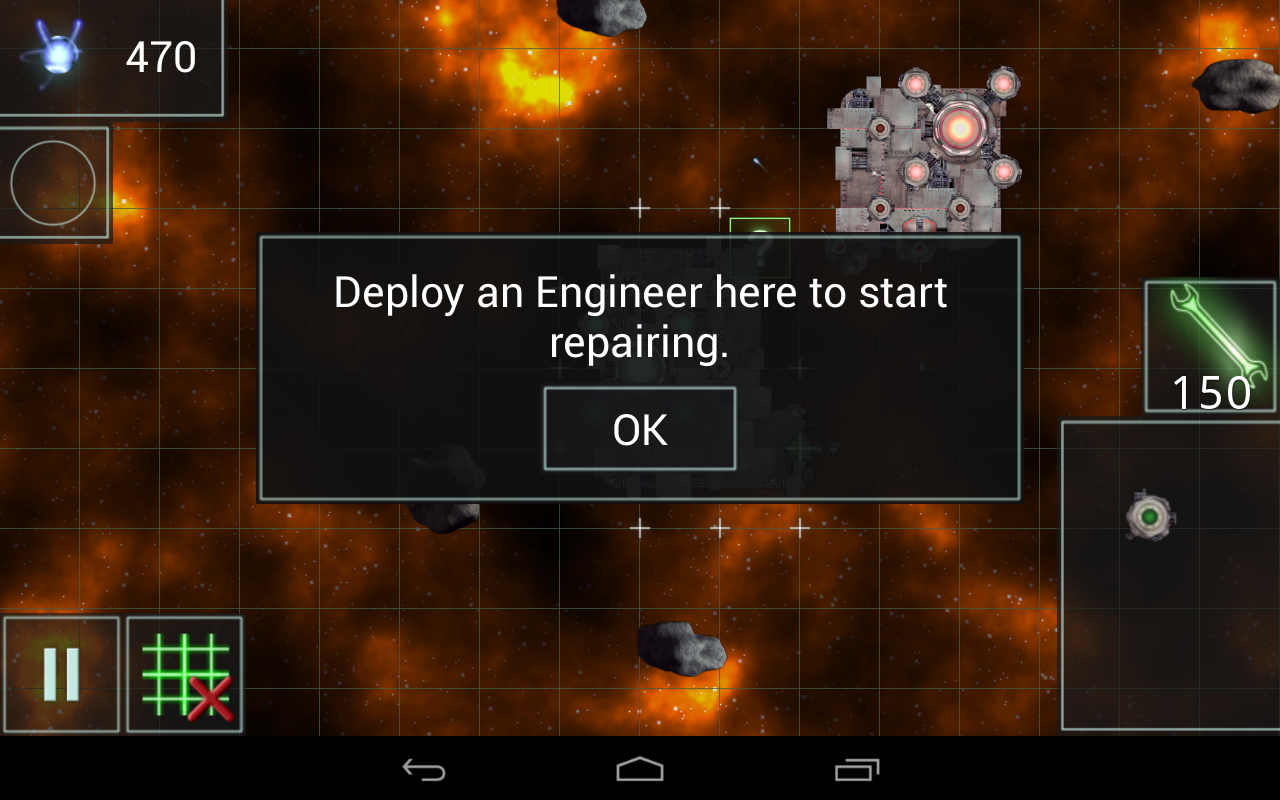- ARPDAUPosted 13 years ago
- What’s an impressive conversion rate? And other stats updatesPosted 13 years ago
- Your quick guide to metricsPosted 13 years ago
Improving Freemium Design – Ionage

This is a guest post by Ben Sipe. If you have a game that you’d like featured on the IFD series just fill out the form here. If you’d like to talk about this or any other games you can find him at his blog, the NativeX blog or on Twitter.
I first saw Ionage with his article on Gamesbrief and I decided to reach out to him about his experience/observations with the freemium vs. premium debate. Long story short, Tim and I had some great discussions and I was eager to try out his game after talking about monetization theories. Now the game is finished so let’s see how he executed his monetization strategy off of those ideas!
What it does right
Concept
The first thing I like about Ionage is the concept. Coming up with a unique concept on a platform that has hundreds of thousands of games is a very difficult thing to do, but I don’t think I’ve played or seen another game like this before. You can tweet me if you’ve played something similar. It combines real time strategy (RTS) with tower defense elements, but without the mindless AI pathing. I wouldn’t call myself a sci-fi fan, but I can enjoy a space themed game here and there.
Tutorial
The second thing I immediately liked was the tutorial system. There are question marks that the player taps to read a hint of what to do next. If the player already knows then they don’t have to tap any of the question marks.
 |
| Tap the question mark and it shows the text |
 |
| Here’s the tip after tapping the question mark |
If I play devil’s advocate, this can hurt games as well. If you give some players too much freedom then they don’t stay on track, pay attention or learn, and can leave the game out of frustration or lack of knowledge on what to do next. This problem typically happens more in causal games/audiences though and I don’t think it correlates with the audience Ionage will have, but something to note nonetheless.
Leveling/upgrades/progression
I challenge all developers to put a leveling system in the game because it can do so many things for your game and players. For example, it’s the easiest way to compare player progress, can drive indirect competition between friends or help give the player a sense of accomplishment. Not only are there player levels, but there are upgrades to weapons and abilities to unlock (like repairing). Lastly there’s a map with missions and some level of decision on what to do/play/unlock next. This helps with player engagement and even immersion. That is, if you believe players can become immersed in a mobile title.
Some upgrades require me to monetize
This is a debatable topic. Some believe a properly designed F2P game gives players the ability to player the whole game for free (albeit might be a very slow progression), and some say paying players need a different experience than non-paying players. Why can’t we have both? So far in Ionage you can. I haven’t beaten the entire game, but so far when I beat a level it opens up more levels and/or upgrades. If I’m good at the game, I shouldn’t need to purchase the monetized upgrades but if want to dominate this game I might purchase the upgrades to stomp the AI opponent. The game starts easy, but 30-60 minutes in I start hitting levels with secondary missions that are challenging so I am feeling a nudge to monetize.
No delay mechanics
I have yet to meet a player who said I can’t wait for my 14 day wait time to upgrade my town hall in Super Awesome City Builder so players of Ionage will like the fact that there’s no delay mechanics. I don’t have to wait for my ship to get to the next mission, wait for my upgrade to “ship” out to my virtual base and you better not mention anything about energy to me!
What could be improved
No delay mechanics
This is a win for players, but in my mind a loss for Twice Circled. We can argue about how terrible or annoying delay mechanics are as gamers, but you can’t argue against the revenue it generates. Just check top grossing charts if you don’t believe me. If you have a profitable F2P studio without using delay mechanics, that’s great, but know that your happiness with user experience/immersion/whatever is coming at a cost.
I should also note that delay mechanics don’t have to be session stopping. Delay can limit two things; time to progress through content and actions/time per play session. In my opinion games the use delay mechanics shouldn’t encourage the player to leave the game when they hit the delay. A great example of this is Hay Day. You have to wait for a building or food/supplies, but there are so many things to do that the player isn’t encouraged to leave the game when they encounter a delay mechanic. You can fish, shop on the newspaper, visit other farms, etc. Just watch someone else playing Hay Day to see what I mean.
Confusing IAP options
When I visit the store I see a series of badges (IAP options). 9 different badges to be precise. Some unlock upgrades, some are worth medals, some unlock game modes and others unlock permanent modifiers that can be toggled. My first tip in boosting virtual economies is not overwhelming the player with a bunch of options. Perhaps it’s just me, but this store is a little confusing and the options do overwhelm me.
I’m also not feeling a need to make an IAP yet. I’ve been able to beat all the side missions besides one, and I’ve had enough medals to unlock any of the non-monetization-required upgrades.
LCV issues…
Let’s say I’m completely in love with this game, and want to buy everything. What is it worth to me?
That’s actually a trick question. To maximize freemium revenues you need to allow players to spend what they want to for your game. This model is exactly how games get funding on crowd funding sites like Kickstarter. If you look at a game like Wasteland 2, all price points ($15-$10,000) get you the game but the more you spend the closer you get (emotionally and some physically) to the game, and some people really want that.
If I bought everything in Ionage the total comes out to $13.41 and Twice Circled takes home $9.39. I don’t know how much it was to make Ionage, but let’s use $50,000 for example. You need 5,325 players buying every option to break even, but most paying players won’t purchase every option. Let’s say the average is 2 IAPs (which might even be optimistic) or $2.07 ARPPU (average revenue per paying user). You’ll need 24,155 paying players to break even. If the conversion rate follows a typical 2% then you need about 1,207,750 installs… and these are all organic figures! Throw in user acquisition costs and this quickly gets messy. This is why you need the allow players to pay what they want to pay. Without the Power Law, F2P would have a hard time existing.
It’s possible to have a success or be profitable with a monetization strategy like this, but you have to gain new users as quick as current ones are churning which is an extremely difficult thing to do organically, and very costly through user acquisition. Also, you need to be dealing with really big figures. Again it’s feasible, but when creating a business plan I don’t think investors will be interested in what you may think is “feasible.”
Not evergreen
The mission map allows me to select the next level if there’s a choice but I’m sure there’s an end to the content. I don’t know how long it takes to consume all the content, but to maximize profits it’s best to design a F2P game to have no end, or at least no reason to quit. This is also called Evergreen.
Some might think this is an evil tactic, but again as long as you’re not directly preying on players with psychological tricks then there’s nothing wrong with people wanting to play your game for years.
 |
| Super professional mockup made in paint |
Single platform
I believe Ionage is only available on one platform, Android. Not all games do better on iOS from a revenue perspective, but many do. I’ve also heard some success stories on Windows 8 and I think this is a very similar type of game and target audience as those successes. I’d love to see this game on more screens, but I realize this comes at a cost as well.
No multiplayer or social mechanics
Since there’s an end to content, multiplayer could possibly give a reason for players to continue playing the game. There’s also no way to share/tweet scores or invite friends. Complain all you want about Candy Crush Facebook requests but do you think that game would’ve been as successful without their aggressive Facebook integration? Word of mouth and social networks can play a big role in how you get discovered and it’s almost free (minus development time to integrate API).
With all the things I just critiqued I do like the game as a gamer and I hope it’s successful for Twice Circled, but I think they’re in a tough spot. They had some struggles with the monetization strategy when making the game and even if they did go premium, Android has something like an 80% to 95% piracy rate. There have been studios that have been successful with the premium model on Android, but I really don’t know of many. However, if the game isn’t profitable that doesn’t mean this has been all for nothing. The knowledge developers learn by launching their own games is exactly the experience and knowledge they will need to be successful in the future. If OMGPOP released 35 titles before getting their success story, and this is Twice Circled’s first title… then I can’t wait to see what they release in the future.













